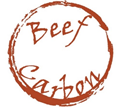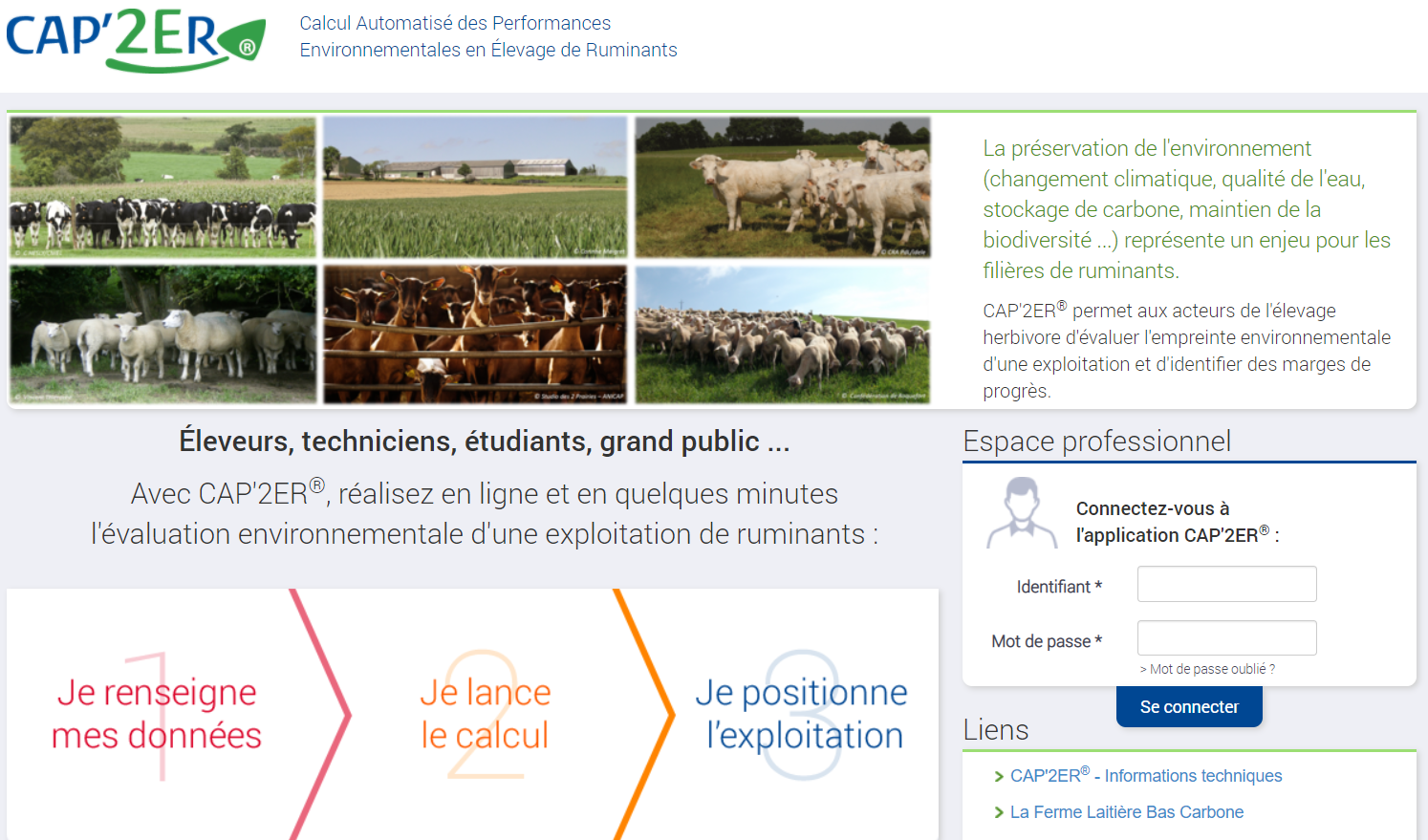Preserving the environment (climate change, water quality, carbon storage, maintaining biodiversity, etc.) is a challenge for the ruminant sectors.  CAP'2ER® enables those involved in herbivorous livestock farming to assess the environmental footprint of a farm and identify areas for improvement.
CAP'2ER® enables those involved in herbivorous livestock farming to assess the environmental footprint of a farm and identify areas for improvement.
Objective evaluation of the environmental footprint, identifying margins for progress and building action plans. In order to specify the interactions between a livestock farm and the environment and to initiate progress initiatives with livestock farmers, the ruminant breeding sectors have developed this tool, an evaluation and technical support tool.
CAP'2ER® aims to:
- Raise awareness of livestock farmers and advisers to take into account environmental issues (positive and negative) but also economic and social issues
- Assess the environmental footprint of ruminant livestock products (milk, meat)
- Locate farms in relation to references or a group of farms, and create a national observatory
- Linking environmental, technical and economic performance
- Identify areas for improvement and implement actions to improve the environmental footprint of farms while ensuring their sustainability

It's a two-level tool
Level 1: AWARENESS
An educational tool aimed at the general public, students, breeders and advisers whose objective is to raise awareness and carry out an initial rapid assessment of environmental performance. Level 1 is based on 27 measures.
Level 2: ACT
A decision support tool intended for consultants/technicians whose objective is to carry out a detailed assessment of the environmental footprint, identify areas for improvement and build action plans. Level 2 is based on 150 measures.
Multi-criteria tool
Beyond the challenge represented by climate change, CAP'2ER® integrates other environmental indicators in order to better identify other potential impacts on the environment and the sustainability of farms.
The environmental assessment is supplemented by indicators reflecting the positive contributions of livestock farming to biodiversity and carbon storage, as well as by a feed performance indicator (PerfAlim) reflecting the primary function of agricultural activity.
To assess the sustainability of farms, economic and working conditions indicators complete the set of indicators. This dimension aims to integrate the evaluation of the triple economic, social and environmental performance in order to build action plans consistent with the sustainability of ruminant farms in the medium and long term.
Build action plan
As essential as they are to qualify the performance of a livestock farm, environmental and sustainability indicators must be linked to practice indicators used daily by farmers and technicians.
By evaluating the two types of indicators in parallel, CAP'2ER® thus makes it possible to highlight the practices which must evolve in order to improve the technical performance of a farm and its environmental performance. These indicators, which concern herd management, feeding, fertilization and the use of excreta, etc., are commonly used in the context of advisory missions for livestock farmers.
CAP'2ER® in practice
The diagnosis realized with the technician of beef cattle farm. On the farm, the diagnosis takes half a day. The same diagnosis is done everywhere on France (or other country). All data is saved which makes it easy to situate the farm in relation to the references or a group of farms. The farm is only compared to a similar group of farms.
Benefits
Support from all members of the beef sector of the country
Consultation with animal welfare NGOs
Construction of a practical and realistic diagnosis on farms (duration of the diagnosis, level set on the criteria)
Impact
- Socio-economic resilience: Cost of the diagnosis and cost, if it's necessary of the equipment to be up to date on a good practice .
- Animal health and welfare: Some good environmental practices are also good for animal welfare (better productivity for example means animal welfare being checked)
- Production efficiency and meat quality: the diagnosis takes into account the production efficiency on the beef cattle farm
- Environmental sustainability: The diagnosis aims at describing the environmental situation of the farm and helps finding solution to make improvement.